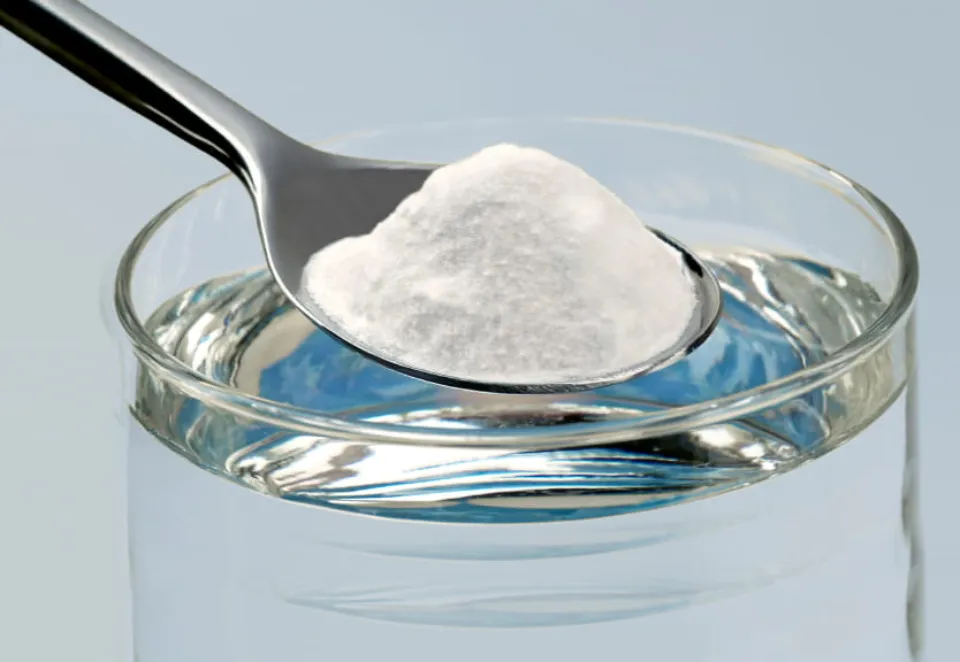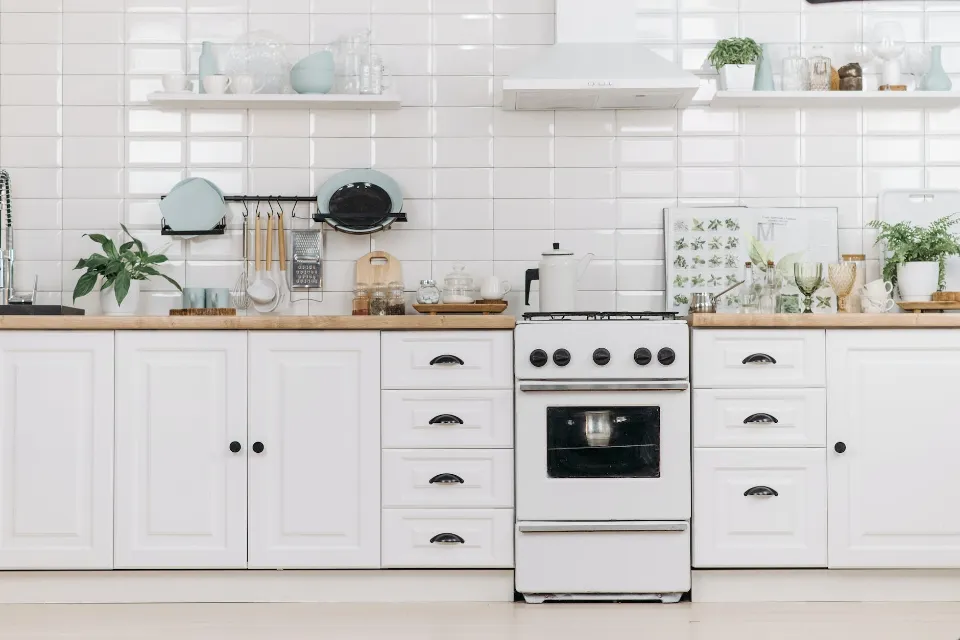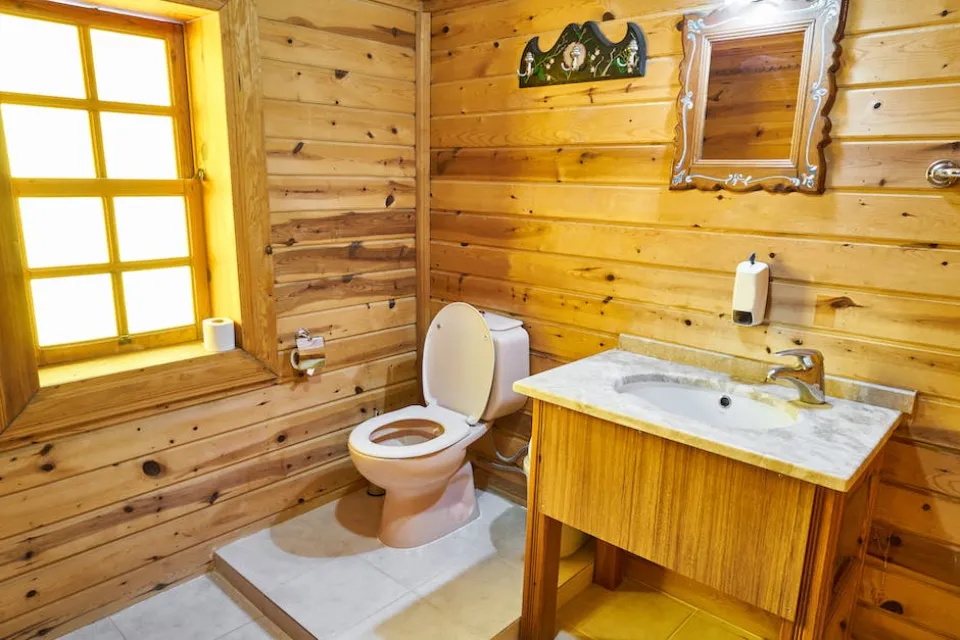Kitchen cabinets that smell great, look amazing, and are hygienically clean can be achieved by following our step-by-step guide cleaning procedure. So, how to clean kitchen cabinets?
It’s easy. Just empty them out, tackle the tops, mix up a gentle cleaner, clean high to low, go at the grease, treat the trim, handle hinges and hardware right, get the glass gleaming, and clean the contents.
Continue reading.
How to Clean Kitchen Cabinets?
Follow this step-by-step guide to make cleaning kitchen cabinets an easy task so you can get those important cupboards in spotless condition.
Empty Them Out
- As you will need to remove and temporarily store the contents on countertops or elsewhere, you may decide to stagger cabinet cleaning rather than try to complete it all in one day.
- Peel off and get rid of shelf paper that has seen better days once the cabinets are empty.
- The shelves and drawers should be vacuumed or cleaned of crumbs and dust.
Tackle the Tops
Cabinets that aren’t ceiling height can be a major mess magnet because of those few extra inches on top of the uppers. Use a sturdy step stool or ladder to attack the problem. If it’s only dust, remove it with a long-handled duster or a vacuum’s small round brush attachment.
If grease and dust have combined, getting rid of it might be the most unpleasant aspect of your cabinet cleaning mission.
- Apply some baking soda, squirt some pure white vinegar on the surface, and let it sit for a while.
- Cleanse with a sponge, then scrape with something firm and straight, like an old credit card, and remove any remaining grime with a rag or some paper towels.
- Spray lightly once more, then use a clean cloth to wipe it dry.

Mix Up a Gentle Cleaner
Cleaning your cabinets is the objective; causing damage is not.
- On painted and finished wood (as well as metal, laminate, and vinyl), a few squirts of mild dish soap in hot water is a secure and reliable formula. Add some white vinegar, which has antibacterial properties, to the mixture to give it more sanitizing oomph. This will remove dirt, smudges, and moderate grease buildup.
- To use: Mix in a spray bottle, but apply onto a microfiber cloth or sponge rather than directly on the cabinet surface, as it’s best to avoid saturating wood.
Clean High to Low
- Work your way down after beginning with the uppers. Do interiors first: the back wall, then the sides, then the shelves and drawers. Give corners extra consideration, spritzing cleaning solution on a toothbrush and gently scrubbing as needed.
- To remove any soap residue, proceed with a cloth or sponge that has been lightly moistened with plain water. Wipe dry completely after rinsing, then close the cabinets.
- Box sides should be cleaned first, followed by the fronts of the doors and drawers.
Go at the Grease
Baking soda and water mixed together to make a mild abrasive paste is a cheap, eco-friendly solution for removing sticky, yellowish grease buildup.
- Apply to stubborn grease, let it sit for a few minutes to soak in, and then scrub gently—never scrape!) with a soft-bristled brush.
- After rinsing with a wet sponge, rag, or microfiber cloth, dry.
If you decide to use a commercial product to remove grease, spot test it first in a discreet location. Magic erasers should be used with extreme caution because they contain non-toxic melamine foam blocks with a texture similar to ultra-fine sandpaper, which can scratch glossy paint finishes and varnished wood.
Suggested reading: One of the best ways to quickly improve the appearance and ambiance of a space where you probably spend a lot of time is by updating your kitchen cabinets. So, how much does it cost to paint kitchen cabinets?

Treat the Trim
Grease and dirt love crevices, so both are bound to settle in cabinet trim—the more ornate, the cruddier it can become.
- Use a gentle toothbrush or piece of cloth wrapped around your index finger and your basic cleaning solution to patiently purge.
- Dry after rinsing with a clean, lightly wetened cloth.
Handle Hinges and Hardware Right
Correctly attack the metal components of cabinets.
- You can clean the hinges by wrapping a dry cloth around your index finger. Use an old, soft toothbrush and a solution of 50/50 water and white vinegar to scrub away any stubborn grease before drying.
- To clean the areas around handles, knobs, and pulls that are made of metal or ceramic and that can collect dirt and grease, use a toothbrush.
Get the Glass Gleaming
- If you’ve got glass-fronted cabinet doors, use commercial glass cleaner or a homemade spray solution of one cup of rubbing alcohol, one cup of water, and one tablespoon of white vinegar on inner and outer panes.
Clean the Contents
- Before refilling shelves and drawers, inspect the cookware, dishes, food packages, etc. to ensure that those items aren’t dusty or dirty. Even if everything looks pristine, giving the contents a swipe with a microfiber cloth will warrant it worthy of returning to your sparkling clean cabinets.

What Should I Use to Clean Kitchen Cabinets?
Grease and dust don’t mix well and can be difficult to remove. It may take a little scrubbing but, in terms of cleaning products, a solution of washing up liquid, which is pH neutral so best for wooden surfaces, and the hottest water you can stand will soon have your cabinets looking fresh and clean. To finish, don’t forget to use a microfiber cloth; it’s the quickest and most efficient way to dry and shine.’
How Often to Clean Kitchen Cabinets?
Ideally, you should wipe down the outside of your cabinets once a week or at least once every other week. However, you should deep clean the inside of your cabinets once every few months. Organizing your entire kitchen may seem like a daunting task, but if you tackle each cabinet individually, it will be simpler. For instance, if all of your plates are currently in the dishwasher, you can take advantage of the time to clean the area where they typically rest. Keep track of what you’ve cleaned as you go, and be sure to cover the areas where your plates, bowls, and drinking glasses are placed.
If you’re considering doing it yourself,-painting part of your home, you want to make sure that you get it right the first time. There is very little margin for error when it comes to your time and money. Even though painting your cabinets seems simple enough, you might find yourself second-guessing your decision. What is the best paint brush for cabinets?
Tips for Keeping Kitchen Cabinets Clean Longer
- Dust your cabinets at least once every two weeks with a soft cloth, rag, or standard duster. There should be less need for a thorough cleaning as a result.
- Clean up spills as soon as they happen with a damp cloth or sponge. The likelihood that a substance will damage your cabinets or leave difficult-to-clean stains increases the longer it remains on them.
- The intense heat that can leak from a faulty heat gasket seal can harm cabinets that are placed close to a self-cleaning oven. To prevent this, take out the drawers and doors of all cabinets that are close to or above the oven during a cleaning cycle.
- To avoid damaging cabinet surfaces, keep heat-producing appliances like toasters and coffee makers away from cabinets.

FAQs
What is the Best Way to Clean Greasy Wood Kitchen Cabinets?
Greasy wood kitchen cabinets can typically be cleaned by scrubbing with a solution of water and dish soap designed to cut grease. If it says it is safe for wood, you can also use a baking soda paste or all-purpose cleaner.
Why Are My Kitchen Cabinets Sticky After Cleaning?
If your cabinets are still sticky after cleaning, it’s possible that you didn’t rinse them thoroughly enough. Another possibility is the cleaner didn’t get all the grease and grime, in which case you must repeat your cleaning process.
Does Vinegar Harm Wood Cabinets?
Due to its acidic nature, vinegar can strip the finish off wood cabinets when used to clean them. Metal hardware can be cleaned with a vinegar solution, but it’s best to avoid getting vinegar on the wood of a cabinet.
Read about How to Install Kitchen Cabinets?
Summary: How to Clean Kitchen Cabinets?
Knowing how to clean kitchen cabinets like a pro is vital. It’s easy. Just empty them out, tackle the tops, mix up a gentle cleaner, clean high to low, go at the grease, treat the trim, handle hinges and hardware right, get the glass gleaming, and clean the contents.
The kitchen receives more attention than any other room in the house due to its high traffic and popularity. As a result, it is difficult to miss when something becomes a little dirty. Especially those in south-facing rooms, dark-colored, high-gloss kitchens are more likely to draw attention to dust and fingerprints.
Thank you for reading!



